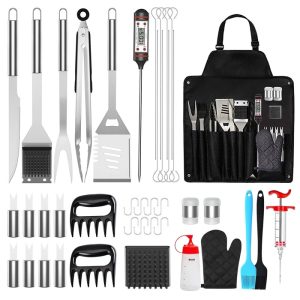Latest Trends in SSAS Pension Investments Among UK SMEs – Daily Business

As pension planning and wealth management continue to evolve, the Small Self-Administered Scheme (SSAS) is a powerful tool for UK small and medium-sized enterprises (SMEs). SSAS pensions offer flexibility and control, allowing business owners and key employees to use their pension assets creatively and invest in the business. In recent years, SSAS pension investment strategies have started to reflect broader economic conditions and growing interest in alternative asset classes. Let’s look at the emerging trends in SSAS pension investment among UK SMEs.

 Photo by National Cancer Institute on Unsplash
Photo by National Cancer Institute on UnsplashUnderstanding SSAS Pensions
An SSAS is an occupational pension scheme designed to control directors and key staff in SMEs. Unlike larger pension schemes, SSAS pensions typically have fewer than 12 members and allow trustees, sometimes the scheme members themselves, to manage and direct the pension’s investments.
This differs from group personal or stakeholder pensions, where the investment decisions are left to third-party fund managers. Some of the main benefits include:
- Loan-back capabilities: An SSAS can loan up to 50% of its net asset value to the sponsoring employer.
- Commercial property investment: Trustees can acquire commercial property, which can be leased to the business.
- Inheritance tax planning: With careful structuring, SSAS assets can be passed to beneficiaries outside the estate.
- Pooled funds for family and business members: This allows coordinated investment decisions and potentially greater returns.
Investment Trends Among SMEs
SSAS pensions remain highly relevant to small and medium-sized businesses, especially when it comes to pooling investments and growing wealth. They are a reliable retirement vehicle that keeps up with the latest investment trends.
Increased Interest in Commercial Property
One of the most consistent trends is the popularity of commercial property investment through SSAS pensions. SMEs use SSAS funds to purchase office space, industrial units, and retail premises leased back to the business. This strategy provides dual benefits. For one, there is rental income, which accrues tax-free within the SSAS. On the other hand, the company can pay rent to its pension fund.
SMEs are increasingly interested in acquiring commercial property, which is now worth 1.9 trillion US dollars, especially outside London and the Southeast. The post-pandemic remote work shift left many traditional office spaces undervalued, offering opportunities for SSAS investors to purchase property at competitive prices.
Moreover, commercial property offers a hedge against inflation, which is highly important amidst economic uncertainty and rising interest rates. As inflation erodes the value of cash and fixed-income assets, many SMEs see real estate as a reliable investment, and can do so within their pension portfolio.
Growth in SSAS Loan-Back Arrangements
Another increasingly widespread use of SSAS assets is the pension-backed loan to the sponsoring employer. Up to 50% of the scheme’s net value can be lent back to the company if it meets strict criteria: the loan must be secured, charged at a commercial interest rate, and repaid within five years.
Access to traditional financing has become more difficult, so there has been a surge in the practice of companies borrowing from their own SSAS pension fund. SMEs use SSAS loans as a flexible, lower-cost funding solution for cash flow, expansion projects, or asset purchases.
This trend has been seen in early-stage and high-growth businesses struggling to secure conventional bank financing. A SSAS loan allows them to invest in operations without taking on high-interest debt or diluting equity. At the same time, they grow the pension fund through interest payments.
Alternative Investments and Diversification
UK SMEs are now diversifying their SSAS portfolios beyond traditional stocks and bonds. Although commercial property and loan-back arrangements are dominant, there’s a growing interest in alternative assets. These include private equity and unlisted shares, including shares in the sponsoring business.
SSAS portfolios can also include investments in peer-to-peer lending platforms, which offer higher yields than cash or bonds. Another trend is investing in cryptocurrencies. Although crypto is not directly allowable within an SSAS, it’s possible to invest through company structures indirectly.
Although there are alternative investments that can be added to your SSAS portfolio, compliance is more critical than ever. Trustees must avoid ‘taxable property’ rules and ensure investments are permitted within SSAS guidelines to avoid punitive tax charges.
SSAS as a Family Wealth Vehicle
A more recent trend is using SSAS pensions as multi-generational wealth vehicles. Unlike SIPPs (Self-Invested Personal Pensions), which are individual-focused, an SSAS pension allows up to eleven members, including company directors, employees, and their family members, to join the fund and invest.
SMEs increasingly use SSAS structures to build long-term investment platforms that can be passed down to the next generation. This approach is popular among family-run businesses that want to create succession planning tools while maximising tax efficiency and investment potential.
Challenges and Considerations
Despite the growing appeal of SSAS pensions, businesses still face some challenges. These include:
- Complexity: The regulatory framework for SIPPS and personal pensions is more intricate, and trustees have to deal with fiduciary responsibilities.
- Risk exposure: Investments in one’s own business can expose the pension to business volatility.
- Liquidity: Commercial property and private equity investments can be illiquid, posing challenges for scheme members approaching retirement.
- HMRC scrutiny: Missteps in compliance can lead to severe tax penalties, especially with connected-party transactions or investments in taxable property.
SSAS Pensions Become Integral to UK SMEs
SSAS pensions have become more critical to the financial strategy of UK SMEs, blending long-term retirement planning with entrepreneurial agility. Whether used to acquire commercial property, fund business expansion, or invest in alternative investments, SSAS schemes allow SME owners to take control of their financial future.
#Latest #Trends #SSAS #Pension #Investments #Among #SMEs #Daily #Business




